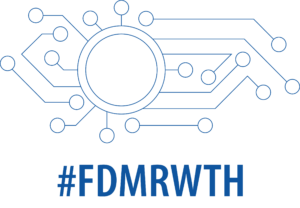
Quelle: Unsplash
Im FDM-Kontext und vor allem, wenn es um die Veröffentlichung von Forschungsdaten geht, hört und liest man häufig den Begriff „Repositorium“. Dieser wird so selbstverständlich genutzt, dass sich Neulinge oft gar nicht trauen, zu fragen, was es damit auf sich hat. Damit man sich nicht durch die vielen verschiedenen Google-Einträge klicken muss, haben wir die wichtigsten Informationen zum Thema in unserem neuen Blogbeitrag zusammengefasst.
Was ist ein Repositorium?
Ein Forschungs-Repositorium ist ein Dokumentenserver, auf dem wissenschaftliches Material möglichst dauerhaft digital gespeichert und organisiert wird, um die Auffindbarkeit und Zugänglichkeit der Daten zu sichern.
Wie funktioniert ein Repositorium?
Die Daten werden durch die datengebenden Personen über eine webbasierte Benutzeroberfläche in die Informationsstruktur überführt oder die Betreibenden eines Repositoriums sammeln die Daten automatisiert über entsprechende Protokolle und Schnittstellen.
Für die Nachnutzung durch Dritte werden neben den eigentlichen Daten auch deren Metadaten benötigt. Datengebende können diese aus anderen Anwendungen übernehmen oder manuell hinzufügen.
Vor der Aufnahme in das Repositorium werden die Daten häufig von Kuratierenden hinsichtlich ihrer inhaltlichen und technischen Qualität, teilweise auch bezüglich rechtlicher Aspekte, geprüft. So wird sichergestellt, dass die Daten in der vorliegenden Form durch Dritte nutzbar sind.
Die meisten Repositorien vergeben eindeutige persistente Identifikatoren, damit die Daten dauerhaft referenzierbar und zitierfährig sind. Die Inhalte der Repositorien werden sowohl über die persistenten Identifikatoren als auch über entsprechende Schnittstellen in Suchmaschinen und Fachdatenbanken indiziert. Darüber hinaus verfügen die Repositorien über eine Suchfunktion, mit der Nutzende die enthaltenen Daten finden können.
Wie wählt man ein passendes Repositorium aus?
Bei der Auswahl eines passenden Repositoriums sollte man sich vor allem an den Konventionen der jeweiligen Fachdisziplin oder den Vorgaben der Förderinstitutionen orientieren. Die Entscheidung hängt aber auch davon ab, ob die Daten für einen bestimmten Zeitraum (z.B. zehn Jahre) aufbewahrt oder langzeitarchiviert werden sollen.
Falls keine Vorgaben existieren, sollten zuerst fachliche Repositorien als Speicherorte in Betracht gezogen werden. Verzeichnisse wie re3data.org können die Suche nach einem passenden Repositorium erleichtern.
Wenn für die Forschungsdaten kein geeignetes fachliches Repositorium existiert, bieten sich institutionelle Repositorien an, die von Universitäten und Forschungseinrichtungen angeboten werden. Auch die RWTH Aachen University, bietet mit RWTH Publications ein institutionelles Repositorium an. Aber auch generische Repositorien, oft durch zentrale Einrichtungen oder gemeinnützige Organisationen bereitgestellt, können eine Option sein. (*)
Mehr erfahren
Lesen Sie auch die Anleitung zum Veröffentlichen von Forschungsdaten auf RWTH Publications. Wenn Sie Fragen zum Forschungsdatenmanagement im Allgemeinen haben, wenden Sie sich einfach an das ServiceDesk. Das FDM-Team freut sich auf Ihre Nachricht.
Besuchen Sie für weitere Informationen zum FDM auch die RWTH-Webseiten. (**)
_____
Verantwortlich für die Inhalte dieses Beitrags ist Sophia Nosthoff.





Schreibe einen Kommentar
Du musst angemeldet sein, um einen Kommentar abzugeben.